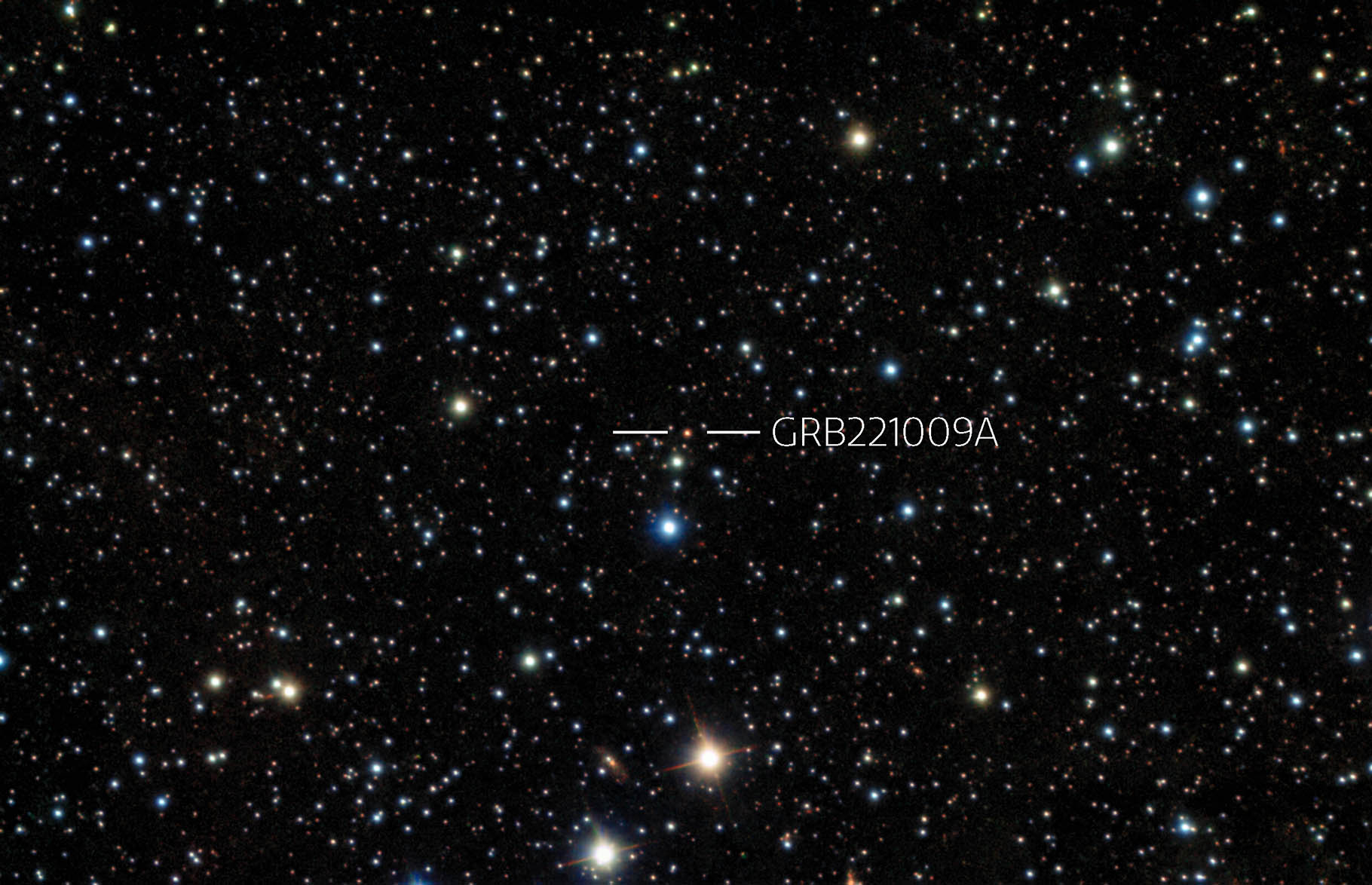NOIRLab: Record-Breaking Gamma-Ray Burst Possibly Most Powerful Explosion Ever Recorded

In the early-morning hours of 14 October 2022, astronomers using the Gemini South telescope in Chile operated by NSF’s NOIRLab observed the unprecedented aftermath of one of the most powerful explosions ever recorded, Gamma-Ray Burst GRB221009A. This record-shattering event, which was first detected on 9 October 2022 by orbiting X-ray and gamma-ray telescopes, occurred 2.4 billion light-years from Earth and was likely triggered by a supernova explosion giving birth to a black hole.
A titanic cosmic explosion triggered a burst of activity from astronomers around the world as they raced to study the aftermath from what is one of the nearest and possibly the most-energetic gamma-ray burst (GRB) ever observed. Just-released observations by two independent teams using the Gemini South telescope in Chile — one of the twin telescopes of the International Gemini Observatory operated by NSF’s NOIRLab, in partnership with Canada, Chile, Brazil, Argentina and Korea — targeted the bright, glowing remains of the explosion, which likely heralded a supernova giving birth to a black hole.
The GRB, identified as GRB 221009A, occurred approximately 2.4 billion light-years away in the direction of the constellation Sagitta. It was first detected the morning of 9 October by X-ray and gamma-ray space telescopes, including NASA’s Fermi Gamma-ray Space Telescope, Neil Gehrels Swift Observatory, and the Wind spacecraft.
As word of this detection quickly spread, two teams of astronomers worked closely with staff at the Gemini South to obtain the earliest-possible observations of the afterglow of this historic explosion.
In the early-morning hours of Friday, 14 October, two Rapid Target of Opportunity imaging observations [1] were conducted by two independent teams of observers led by graduate students Brendan O’Connor (University of Maryland/George Washington University) and Jillian Rastinejad (Northwestern University). The observations occurred mere minutes apart. The first observation used the FLAMINGOS-2 instrument, a near-infrared imaging spectrograph. The other observation used the Gemini Multi-Object Spectrograph (GMOS).
The teams now have access to both datasets for their analyses of this energetic and evolving event.
“The exceptionally long GRB 221009A is the brightest GRB ever recorded and its afterglow is smashing all records at all wavelengths,” said O’Connor. “Because this burst is so bright and also nearby, we think this is a once-in-a-century opportunity to address some of the most fundamental questions regarding these explosions, from the formation of black holes to tests of dark matter models.”
Thanks to the fast reaction of observers and staff, combined with the use of Gemini Director’s Discretionary Time and efficient data-reduction software like Gemini’s DRAGONS “FIRE” (Fast Initial Reduction Engine), this image was quickly produced soon after the observations.
“The agility and responsiveness of Gemini’s infrastructure and staff are hallmarks of our observatory and have made our telescopes go-to resources for astronomers studying transient events,” said Gemini Chief Scientist Janice Lee.
